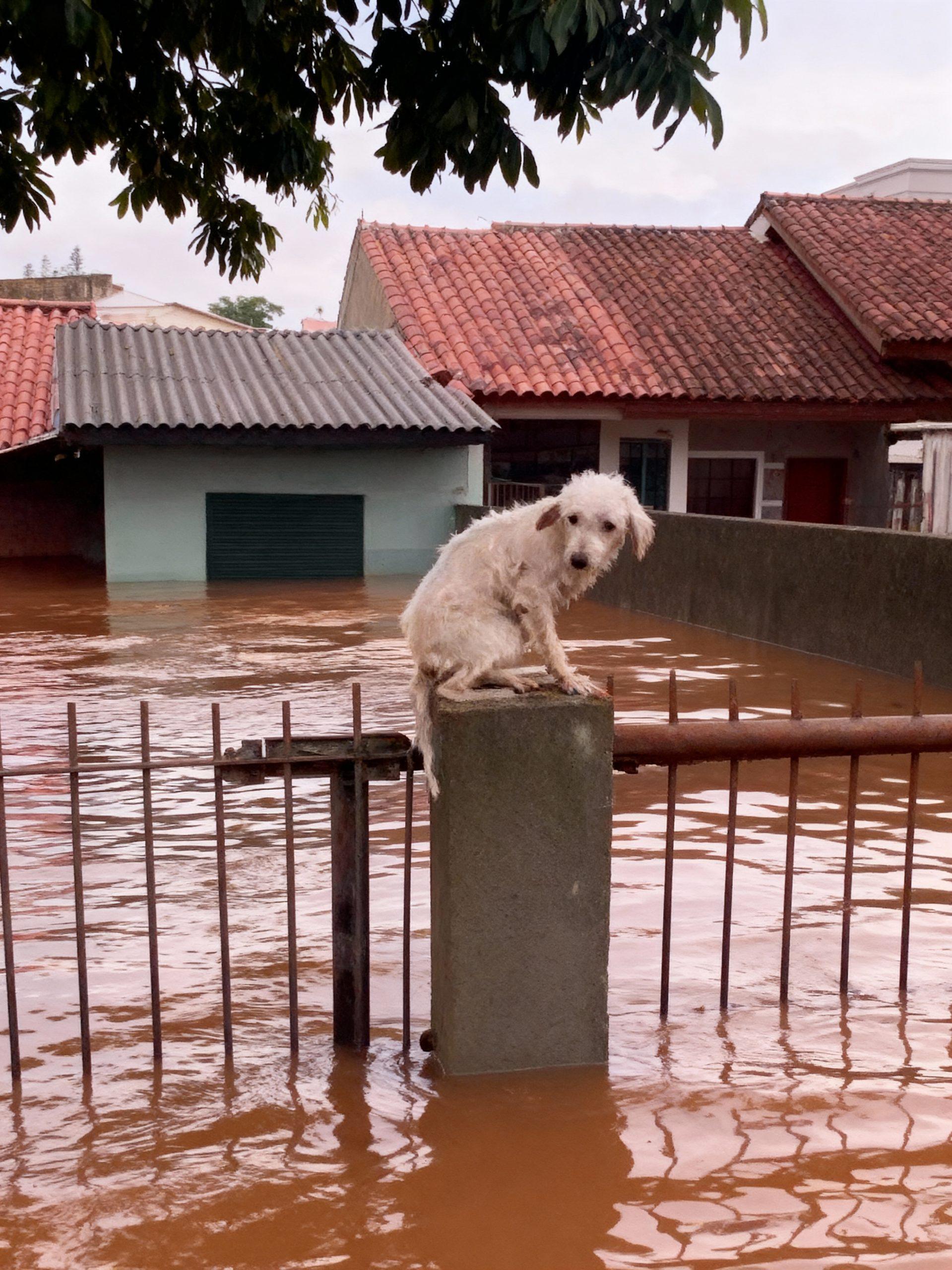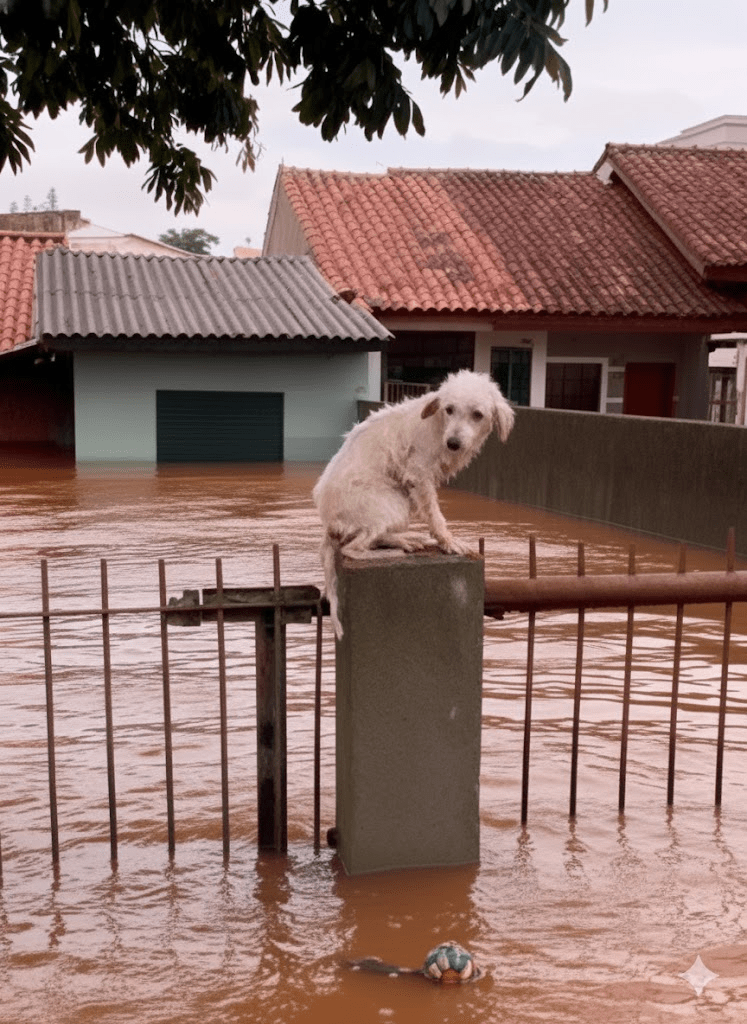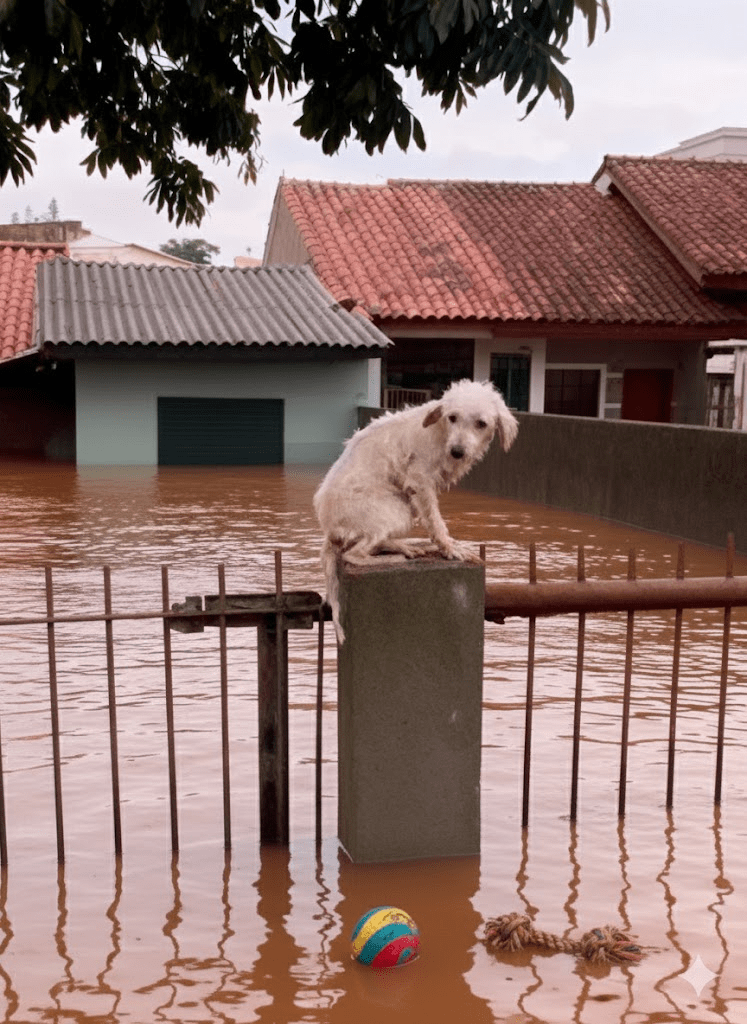The devastating impact of floods often brings to mind images of submerged homes, displaced families, and infrastructural damage. We see the heroic efforts of rescue teams, the resilience of communities, and the heartbreaking stories of loss. However, amidst these narratives, there’s a silent suffering that often goes unnoticed: the immense peril faced by animals. The accompanying image, a poignant snapshot of a small, white dog perched precariously on a concrete pillar, surrounded by murky, reddish-brown floodwaters, serves as a stark reminder of this often-overlooked reality. Its soaked fur, wide, apprehensive eyes, and isolated stance speak volumes about the fear, confusion, and vulnerability that animals endure when natural disasters strike. This dog’s predicament is not an isolated incident; it represents countless animals, both wild and domestic, who are left to fend for themselves against the unforgiving forces of nature, struggling for survival as their habitats are swallowed by the rising waters. Their stories, though often untold, are critical in understanding the full scope of a flood’s devastation and the urgent need for comprehensive disaster preparedness plans that include the welfare of all living creatures.

For domestic animals, the challenges are multi-faceted. Pets, accustomed to the comfort and safety of human homes, are suddenly thrust into a chaotic environment. Many are left behind in the haste of evacuation, either accidentally or due to limitations in transport or shelter policies. The image of the dog illustrates this perfectly – an animal that was once safe within a home now isolated and exposed. Without their human companions, they face starvation, exposure, and the risk of injury or drowning. Even those that manage to stay with their owners often experience immense stress and trauma, as their routines are disrupted and their sense of security shattered. The psychological toll on these animals is significant, often manifesting in behavioral changes long after the waters recede.

This dog’s story, while a powerful example, is but one thread in a vast tapestry of animal suffering during floods. Livestock, crucial for the livelihoods of many communities, also face dire consequences. Farmers often make heartbreaking decisions, forced to choose between their own safety and attempting to move large numbers of animals in rapidly rising waters. Those animals that cannot be moved are at risk of drowning, injury, or succumbing to disease in the aftermath due to contaminated water and lack of clean feed. The economic impact of these losses is devastating for rural communities, highlighting the interconnectedness of human and animal welfare.







